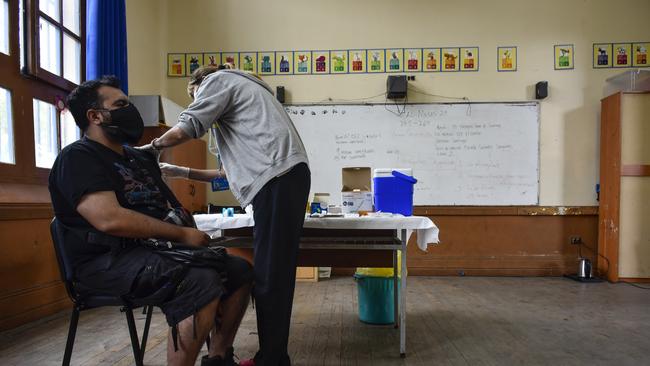Vaccine rollout battling ‘way-out theories’
Misinformation about coronavirus has reached the most remote communities in the northwest corner of Australia via Facebook.

Misinformation about coronavirus has reached the most remote communities in the northwest corner of Australia via Facebook, contributing to a wariness about the vaccine among about half of the Kimberley’s Indigenous population, according to the head of the Kimberley Aboriginal Medical Service.
Despite this, the service’s director, Lorraine Anderson, believes the vaccine rollout will succeed in the region’s Indigenous communities
Community-controlled Indigenous health organisations are doing the work of vaccinating Aboriginal and Torres Strait Islander people in remote communities with the AstraZeneca vaccine, which — unlike the Pfizer vaccine — can be transported safely to hot and distant locations. A national committee of Indigenous health services is co-ordinating the remote vaccinations and believes they will start in all remote communities by late March.
Dr Anderson said it would be a big challenge to deliver two vaccine jabs, 12 weeks apart, to people in some of Australia’s remotest outposts. “And in between there are flu vaccines we have to administer,” she said. “People will think of the year as the one they got jabbed, that’s for sure.”
The logistics for the national rollout to remote locations are considerable. In the Kimberley, any of the medical service’s 250 staff were trained in administering the COVID-19 vaccine. Another 150 health workers providing renal dialysis in the region where kidney failure is high will ensure their vulnerable dialysis patients are among the first in line for the vaccine.
Across the Kimberley, 8000 people will be vaccinated within weeks in clinics in Broome, Derby, Halls Creek, Kununurra and communities in remote areas of the Western Desert.
“Since we have no cases, there’s time to take a considered approach,” Dr Anderson said. “So we’ve been going out and asking communities how we should do it, rather than telling them what’s going to be done.’’
One of the most remote places is Ringer’s Soak, a community of about 80 people 150km south of Halls Creek, which is likely to have its vaccines flown in. “There are two clinic nurses who will do it on site,” Dr Anderson said. “All the vaccine fridges are all cold chain, because we do flu and childhood vaccinations all the time.”
Vaccination rates in the Kimberley are higher than the national average for other diseases, she said, including a 98 per cent vaccination rate for babies.
“Vaccination is something we’re very familiar with and comfortable with,” she said. “The difference is this requires vaccinating so many people in a short time.”
A dedicated team is working on communication strategy because social media has spread misinformation to even the most remote outstations.
“Everyone’s on Facebook; the reach here is completely under-estimated,” Dr Anderson said.
“We found there are misconceptions about the vaccine, some way-out conspiracy theories and some views that ‘we don’t really need it because we haven’t got COVID’.’’
She said anecdotal evidence suggested half of Aboriginal people were unsure about taking the vaccine. “Unfortunately our success in keeping COVID out has made everyone think they are not at risk. But already 83 per cent of our clinical and non-clinical staff say they will definitely get vaccinated. It’s people in remote areas that get information about people dying and conspiracy theories. But we explain if we’re not vaccinated, we’re going to be in strife.”



To join the conversation, please log in. Don't have an account? Register
Join the conversation, you are commenting as Logout